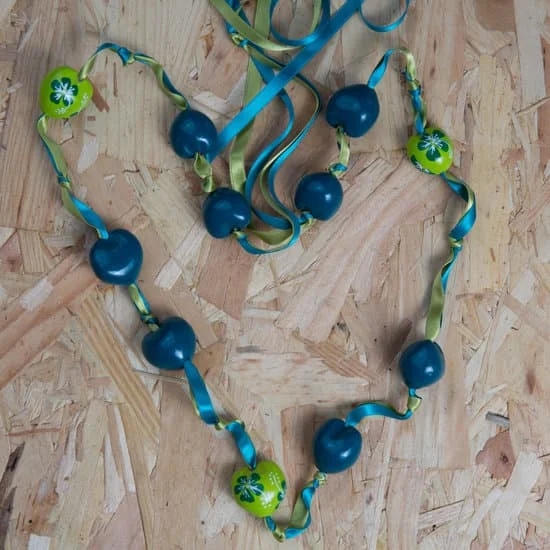Are you a talented jewelry maker looking to take your craft to the next level? If so, you may be wondering how to sell handmade jewelry in stores.
Handmade jewelry is not only a beautiful form of artistic expression, but it also holds sentimental value for both the maker and the buyer. In this article, we will explore the ins and outs of selling handmade jewelry in retail stores, from understanding the market and identifying the right stores to creating compelling displays and building sustainable business models.
Handmade jewelry is a unique form of art that allows creators to express their creativity through intricate designs and craftsmanship. Each piece of handmade jewelry tells a story, making it all the more appealing to potential buyers. Whether you specialize in beaded bracelets, wire-wrapped pendants, or metalwork earrings, there is a market for your handmade creations.
Understanding the market for handmade jewelry is crucial before venturing into selling your pieces in retail stores. This includes knowing your target demographic, staying up-to-date with current trends, and being aware of your competitors. With valuable insight into the market landscape, you can strategically position your handmade jewelry for success in stores.
Understanding the Market for Handmade Jewelry
When it comes to selling handmade jewelry in stores, understanding the market is crucial for success. The market for handmade jewelry is diverse and multifaceted, with a wide range of potential customers who appreciate the uniqueness and personal touch that comes with handmade pieces. Understanding the different segments of this market can help you tailor your products and marketing efforts to better appeal to the right audience.
Identifying Target Demographics
One key aspect of understanding the market for handmade jewelry is identifying the target demographics for your products. Consider factors such as age, gender, income level, lifestyle, and fashion preferences to determine who is most likely to be interested in your handmade jewelry. This insight will guide your product development and marketing strategies, helping you create offerings that resonate with your target customers.
Market Trends and Preferences
Another important aspect of understanding the market is staying abreast of current trends and preferences within the handmade jewelry industry. Keep an eye on popular styles, materials, colors, and designs that are gaining traction in the market. This knowledge will allow you to adapt your product line to align with current trends while still maintaining the unique appeal of handmade jewelry.
Evaluating Competition
Additionally, it’s essential to assess the competition in the handmade jewelry market. Pay attention to other brands and artisans selling similar products in stores and online. Understanding what sets your handmade jewelry apart from competitors can help you position your brand effectively and identify opportunities for differentiation.
By delving into these aspects of the market for handmade jewelry, you can gain valuable insights that will inform your overall business strategy on how to sell handmade jewelry in stores effectively. Understanding customer demographics, market trends, and competition will put you on a path towards success in selling your unique creations in retail environments.
Identifying the Right Stores to Sell Handmade Jewelry
When it comes to selling handmade jewelry in stores, choosing the right retail outlets can make a significant impact on your sales and exposure. Here are some key steps on how to identify the right stores to sell your unique pieces:
1. Research: Start by researching local and online boutiques that align with your brand and target market. Look for stores that already carry similar styles of handmade jewelry or have a customer base that appreciates artisanal goods.
2. Networking: Attend local craft fairs, trade shows, or networking events within the artisanal community to connect with store owners and other artisans. Networking can provide valuable insights into potential retail opportunities and help you build partnerships with like-minded businesses.
3. Considerations: Evaluate each potential store based on factors such as foot traffic, location, target demographic, and their current inventory of jewelry. It’s essential to choose stores where your handmade jewelry will stand out and resonate with customers.
4. Pitching: Once you have identified potential stores, reach out to the owners or decision-makers with a compelling pitch. Highlight what makes your handmade jewelry unique, share images or samples of your work, and explain how your products would complement their existing inventory.
By following these steps, you can strategically identify the right retail outlets for selling your handmade jewelry and increase your chances of success in the competitive market.
Creating a Compelling Product Display
When it comes to selling handmade jewelry in stores, creating a compelling product display is crucial to attracting customers and ultimately making sales. The way you present your jewelry can make or break a potential sale, so it’s important to put thought and effort into designing an eye-catching display that effectively showcases your products.
One key aspect of creating a compelling product display is to focus on visual appeal. This includes using props, such as stands, mannequins, or various textures and materials, to enhance the overall look of your display. Additionally, consider using lighting to highlight certain pieces and create a welcoming atmosphere for customers browsing your jewelry.
Another important factor in creating an effective product display is organization. Make sure your jewelry is neatly arranged and easy for customers to access and view. Grouping similar items together can also make it easier for customers to compare different pieces and decide which ones they’d like to purchase.
In addition to visual appeal and organization, consider incorporating storytelling into your product display. Share the inspiration behind your designs, the materials you use, or any special techniques you employ in creating your handmade jewelry. This personal touch can help connect customers emotionally to your products and make them more likely to make a purchase.
Building Relationships With Store Owners
When it comes to selling handmade jewelry in stores, one of the most crucial aspects is building strong and lasting relationships with store owners. These relationships can open doors to new opportunities and help your business thrive. But how do you go about establishing these connections?
Firstly, it is essential to do thorough research on the stores you are interested in. Find out what type of jewelry they currently carry, their target market, and their overall aesthetic. This will help you understand whether your handmade jewelry aligns with the store’s brand and image.
Once you have identified potential stores, reach out to the store owners or managers to introduce yourself and your products. Be prepared to showcase your jewelry and provide information about your brand and what sets your handmade pieces apart from others in the market. It’s also crucial to be professional, courteous, and respectful of their time. Remember that first impressions are lasting, so ensure that you present yourself and your brand in the best possible light.
After making initial contact, it’s important to nurture these relationships by staying in touch with store owners regularly. Keep them updated on new designs or collections, any promotions or events you may be involved in, and inquire about how your jewelry is performing in their store. Building trust and mutual respect with store owners can create a solid foundation for a successful partnership.
Lastly, always be open to feedback from store owners. Constructive criticism can help you fine-tune your products or presentation, ultimately leading to greater success when selling handmade jewelry in stores.
| Aspect | Details |
|---|---|
| Research on potential stores | Finding alignment between your products and the store’s brand |
| Nurturing relationships | Maintaining regular communication with store owners |
| Openness to feedback | Being receptive to constructive criticism from store owners |
Pricing Your Handmade Jewelry for Retail
Understanding the Value of Your Handmade Jewelry
When it comes to pricing your handmade jewelry for retail, it’s important to understand the value of your products. Consider the uniqueness, quality, and craftsmanship of your pieces. Take into account the time and effort you put into creating each item, as well as the cost of materials. By understanding the value of your handmade jewelry, you can set a fair and competitive price that reflects the worth of your work.
Researching Market Prices
Before setting prices for your handmade jewelry, it’s important to research market prices. Visit other stores that sell similar products and take note of their pricing strategies. Look online at e-commerce platforms or social media pages to see what similar items are selling for. Understanding the market prices will give you a better idea of how to competitively price your own handmade jewelry in stores.
Setting Wholesale and Retail Prices
When selling handmade jewelry in stores, it’s crucial to differentiate between wholesale and retail prices. Wholesale prices should be lower than retail prices in order to allow retailers to make a profit when they sell your products. Calculate a wholesale price that covers both the cost of materials and labor, while still leaving room for profitability. Then determine a retail price that includes a suitable markup for the store while remaining appealing to customers.
By understanding the value of your handmade jewelry, researching market prices, and differentiating between wholesale and retail prices, you can effectively price your products for retail. This strategic approach will help you maximize sales while maintaining profitability for both yourself and the stores where you sell your handmade jewelry.
Marketing and Promoting Your Handmade Jewelry in Stores
Once you have identified the right stores to sell your handmade jewelry, it’s important to focus on marketing and promoting your products effectively. This is crucial for getting your jewelry noticed by potential customers and driving sales. Here are some strategies on how to effectively market and promote your handmade jewelry in stores:
- Build a strong brand identity: Create a unique brand identity for your handmade jewelry, including a logo, packaging, and overall aesthetic that sets you apart from competitors. Consistency in branding will help customers recognize and remember your products.
- Utilize social media: Leverage social media platforms such as Instagram, Facebook, and Pinterest to showcase your handmade jewelry. Share high-quality images of your products, behind-the-scenes content, customer testimonials, and any promotions or events related to your jewelry business.
- Collaborate with the store: Work closely with the store owners to collaborate on marketing efforts. This could include hosting a trunk show or pop-up event at the store, offering exclusive promotions for their customers, or co-marketing initiatives both online and in-store.
In addition to these strategies, it’s also important to educate customers about the unique qualities of handmade jewelry and the story behind each piece. Consider creating informational materials such as brochures or signage in-store that explain the craftsmanship and materials used in your jewelry.
Finally, don’t underestimate the power of word-of-mouth marketing. Encourage satisfied customers to spread the word about your handmade jewelry, and consider implementing a referral program to incentivize current customers to bring in new ones.
By implementing these marketing and promotional strategies in collaboration with store owners, you can increase visibility for your handmade jewelry and attract more customers to purchase your products.
Handling Sales and Inventory Management
Once you have successfully established your handmade jewelry products in stores, it is crucial to ensure that you effectively manage sales and inventory. This involves tracking the movement of your products, managing stock levels, and monitoring sales performance.
One aspect of sales and inventory management is implementing a reliable system to keep track of your products. This can be achieved through the use of inventory management software, which can help you monitor stock levels, track sales trends, and generate reports on product performance. Additionally, it is important to regularly conduct physical inventory counts to reconcile any discrepancies between the recorded inventory and the actual stock on hand.
Furthermore, managing sales also involves analyzing customer purchasing behavior to understand which pieces are selling well and which ones may require additional promotion or adjustment in pricing. This data can help you make informed decisions about which products to prioritize for production and restocking.
In addition to that, effective inventory management involves ensuring that your products are adequately stocked in stores where they are sold. This might involve working closely with store owners to determine optimal stocking levels based on demand and coordinating timely product deliveries.
| Aspect | Action |
|---|---|
| Inventory Management | Implement inventory management software |
| Sales Analysis | Analyze customer purchasing behavior |
| Stocking Levels | Coordinate timely product deliveries with store owners |
Building a Sustainable Business Model for Selling Handmade Jewelry in Stores
In conclusion, selling handmade jewelry in stores can be a rewarding endeavor for artisans looking to showcase their creations to a wider audience. By understanding the market for handmade jewelry and identifying the right stores to sell your products, you can position yourself for success. Creating compelling product displays, building relationships with store owners, and pricing your products for retail are essential steps in effectively showcasing and selling your handmade jewelry.
Additionally, marketing and promoting your products within stores can further increase visibility and attract potential customers. Through strategic sales and inventory management, you can ensure that your products are well-stocked and accessible to interested buyers. And finally, by building a sustainable business model for selling handmade jewelry in stores, you can lay the foundation for long-term success in this competitive market.
Frequently Asked Questions
How to Sell Jewelry to Retailers?
Selling jewelry to retailers requires a strategic approach. First, it’s important to research and identify potential retailers that align with your brand and target market. Then, prepare a professional presentation showcasing your jewelry collection and be ready to negotiate terms such as pricing, delivery schedules, and marketing support.
What Is the Best Way to Sell My Handmade Jewelry?
The best way to sell handmade jewelry is through a multi-channel approach. Utilize online platforms like Etsy or your own e-commerce website to reach a global audience. Additionally, consider selling at local craft fairs, pop-up markets, or even partnering with small boutiques to expand your reach.
What Type of Handmade Jewelry Sells Best?
The type of handmade jewelry that sells best often includes personalized or customizable pieces that allow for a unique touch. Additionally, trending styles such as bohemian-inspired designs, minimalist pieces, or sustainable materials are popular among consumers. Ultimately, it’s important to understand and cater to the preferences of your target market for successful sales.

Welcome to my jewelry blog! My name is Sarah and I am the owner of this blog.
I love making jewelry and sharing my creations with others.
So whether you’re someone who loves wearing jewelry yourself or simply enjoys learning about it, be sure to check out my blog for insightful posts on everything related to this exciting topic!





